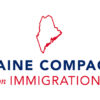HIGH-SKILLED IMMIGRANTS IN PENNSYLVANIA
Date: May 5, 2015
Learn more about the need for high-skilled immigration reform at www.LetPJStay.com
PENNSYLVANIA FACES A LARGE STEM SHORTAGE
- There are more STEM job openings than unemployed STEM workers: From 2009 to 2011, 2.4 STEM job openings were posted online in Pennsylvania for every 1 unemployed STEM worker in the state.
- As STEM fields grow, this problem will likely get worse: Pennsylvania will need to fill 258,610 new STEM jobs by 2020.
- The healthcare industry in particular will be affected by a shortfall of STEM workers: Researchers estimate Pennsylvania will be short 4,091 registered nurses by 2030.
IMMIGRANTS ARE FILLING STEM SHORTAGES IN PENNSYLVANIA
- Immigrants are more likely to study STEM than the native-born: Immigrants are 5.9 percent of Pennsylvania’s population, but in 2009, almost one in three students earning master’s or PhD degrees in STEM fields from Pennsylvania’s research-intensive universities were foreign-born.
- Immigrants are over-represented in the STEM workforce: In 2010, more than one in seven STEM workers with an advanced degree in Pennsylvania were foreign-born.
- Immigrants play a critical role in the healthcare industry: In 2012, 22.8 percent of physicians in Pennsylvania had graduated from a foreign medical school, a population that is overwhelmingly immigrant.
HIGH-SKILLED IMMIGRATION REFORM WOULD HELP PENNSYLVANIA’S COMPANIES COMPETE AND CREATE AMERICAN JOBS
- High-skilled visa holders create jobs for U.S.-born workers: The new H-1B visas awarded to Pennsylvania between 2010 and 2013 will translate into 25,477 new jobs for U.S.-born workers in the state by 2020.
- Our visa system is costing jobs and revenue: Firm-level data from the 2007 and 2008 H-1B lotteries shows that the H-1B caps from those two years alone cost U.S.-born tech workers in the Philadelphia and Pittsburgh metropolitan areas as many as 8,070 additional jobs and as much as $96.4 million in aggregate annual earnings by 2010.


